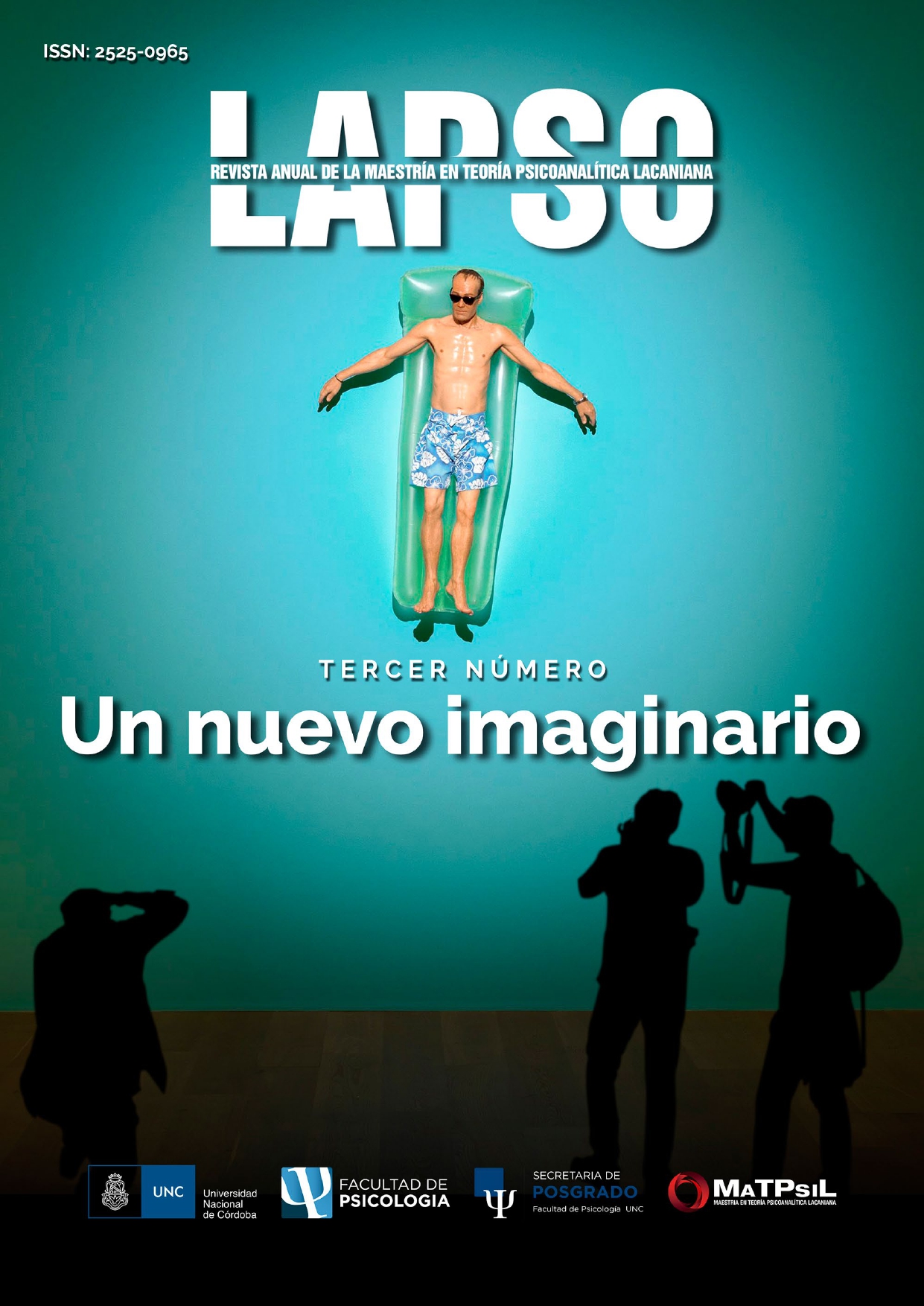The Body, Image Queen in the History of Art
Keywords:
body, history of art, Image QueenAbstract
The hypothesis in this essay is to consider the body as Image Queen in the history of art. The concept of “Image Queen” is proposed by Jacques-Alain Miller as an element of the imaginary register of language experience which equates it with the master signifier in the register of the symbolic.References
Boyme, A. (1987 [1994]). Social History of Modern Art. Madrid: Alianza.
Clark, K. (1956[1996]). The Nude. Madrid: Alianza.
Clark, T. J. (1973 [1981]). Image of the People. Gustave Courbet and the 1848 Revolution. Barcelona: Gustavo Gili.
Foucault, M. (1975 [1991]). Watching and punishing. Mexico: Siglo XXI.
Freud, S. (1936 [2008]). Letter to Romain Rolland (A disturbance of memory in the Acropolis) in Collected Works. Volume XXII. Buenos Aires: Amorrortu.
Giedion, S. (1981 [1985]). The Eternal Present: The Beginnings of Art. Madrid: Alianza.
Miller, J.-A. (1995 [1998]). The Image Queen in Lacan’s elucidation. Brazilian talks. Buenos Aires: EOL- Paidós.
Paton, J. & Storr, R. (2013), Ron Mueck, Buenos Aires: Fundación Proa.
Downloads
Published
Issue
Section
License
Se permite la generación de obras derivadas siempre que no se haga con fines comerciales. Tampoco se puede utilizar la obra original con fines comerciales.


